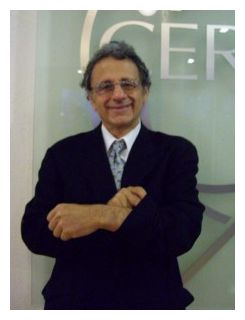The mechanics of the leap year are well known: We add a day to February every four years to maintain the synchronization of our earthly calendar with the celestial reality of the Earth's orbit.
Weeelllll, it turns out that a similar phenomenon plays out on a much smaller time scale. Along with the leap year, there is the leap
second.
Here, let Demetrios Matsakis explain. He's the chief scientist for time services at the US Naval Observatory and the star of one of the best videos you're ever going to watch,
Where Time Comes From (which I've embedded above). This is an outtake from that video, which was produced by the genius
Katherine Wells.
"Until 1971, our standard of time was the rotation of the Earth," Matsakis says. "One turn of the Earth was one day, divided into hours, minutes, and seconds."
This version of time, variability included, has a name: Universal Time 1, or UT1. So, 86,400 seconds in a day (24*60*60). Simple.
But scientists who had been working with atomic clocks already knew that the length of a day, as measured by the Earth's rotation, was variable. In any given rotation, the sun may be off from our perfect temporal abstraction by a tenth of a millisecond. A day, as measured by a rotation, might be 86,400.0001 seconds or 86,399.9999 seconds.
Scientists also realized that the
Earth's rotation is not only variable but slowing a teensy tiny bit. Something like a couple milliseconds per day, although the rate changes.
Now, the official time of record - called UTC or
Temps Universel Coordonné, Coordinated Universal Time - is defined by atomic clocks, which use processes that are less inconsistent than the planet spinning on its axis.

© Amy DustoProfessional timekeeper Demetrios Matsakis does not wear a watch.
To Matsakis, a second is not a division of a day, but "9,192,631,770 periods of oscillation in a undisturbed cesium atom." That matches up pretty closely with 1/86400 of any given rotation, but not
precisely.
And if anything defines atomic clocks, it is precision. As measured by these clocks, the rate of time's advance
doesn't change by more than 0.0000000001 seconds per day.
So, the variability of the Earth's rotation is not a purely theoretical consideration. Time scientist could do nothing about the problem and time as defined by Earth's physical motion and cesium atoms oscillations would slowly drift apart. Just a bit, but a bit.
Or they could do what they did: which is to reconcile the two times by changing the time on atomic clocks. On a given day, like Saturday, June 30, 2012, the second after 23:59:59, the atomically defined UTC clock does
not go to 00:00:00 and the next day, but shows
23:59:60, before allowing July to begin.
There have been 25 leap seconds since 1972 when the reconciling process began.
Of course there is a list on the Internet.
But, it turns out, there are no future leap seconds scheduled for now.
And there's some
real controversy over the future of leap seconds. There are meetings to discuss the issue like the "ITU-R SRG 7A Colloquium on the UTC timescale" and blog posts on the UTC's website with headlines like, "
Time to Leave Leap Seconds Behind?"
Leap seconds are a "
quaint notion," some argue, that's unnecessary and
possibly even destabilizing for GPS satellites, which rely on UTC.
In 2015,
delegates to the World Radiocommunication Assembly will vote on the future of the leap second.
If they choose to abolish them, we'll have ended the kluge that kept us tethered to the most basic human notion of time, the daily motion of the planet.
It's a cesium oscillation world. We're just living in it.
Is an illusion anyway.